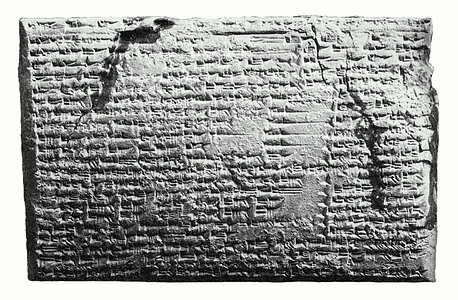Witchcraft
WITCHCRAFT: NATURE & TYPES
Witchcraft & sorcery
Akkadian kišpū “witchcraft” designates both the evil actions performed by the witch and the resulting evil which takes possession of the patient, making him impure and binding him. The witchcraft affecting the patient was often conceived of as a foul substance that could be washed off like dirt or stripped off like a soiled garment. The concept of witchcraft as a transferable quality or substance is also implied in the ubiquitous motif of returning the witchcraft to those who performed it.
Anthropologists commonly distinguish between ‘witchcraft’ as the activity of someone whose innate character and abilities identify him or her as a witch, and ‘sorcery’ as a learned technique of performing harmful rituals and applying magically manipulated substances. This distinction is not reflected in the Akkadian and Sumerian terms belonging to the semantic field of witchcraft and indeed is largely irrelevant to the Mesopotamian evidence. In Mesopotamian sources, an innate witchcraft character is clearly implied only in occasional descriptions of the witch as a demonic, superhuman being, while in most texts the stereotype of warlock and witch represents them as fellow-humans who have used specific sorcerous techniques.
Akkadian terminology
A great variety of terms can be used in Akkadian to refer to witchcraft, and some of these terms seem to have been largely divested of their specific connotations in the preserved textual record. The main term for illegal, evil witchcraft is kišpū “witchcraft”. It is derived from the corresponding verb kašāpu, which also forms the basis of the agent nouns kaššāpu “warlock” and kaššāptu “witch”. Many other terms that refer to witchcraft, its performance and its agents are derived from the verb epēšu “to do”, “to perform, practise rituals” and then also “to perform, practise witchcraft rituals”. Most of these terms are, in principle, ambiguous and can refer both to acts of legitimate, healing magic and to evil witchcraft.
Specific types of witchcraft
A number of other terms refer to specific methods or techniques of witchcraft. The most important among them are
- zikurudû (Akkadian; Sumerian: zi.ku5.ru.da) ‘cutting-of-the-throat’ magic,
- kadabbedû (Akkadian; Sumerian: ka.dab.bé.da) ‘seizing-of-the-mouth’ magic,
- dibalû (Akkadian; Sumerian: di.bal.a) ‘distortion-of-justice’ magic and
- zīru (Akkadian; Sumerian: ḫul.gig) hate-magic.
‘Cutting-of-the-throat’ magic was regarded as an especially dangerous and often deadly kind of witchcraft whose performance regularly involved the invocation of astral deities and the sending of evil-portending omens against the victim.
Both ‘seizing-of-the-mouth’ and ‘distortion-of-justice’ magic made its victim helpless and unable to defend himself before judges and superiors generally, though kadabbedû was held responsible for actual speech disorders, too. Hate-magic caused the victim to become the object of social isolation and hostility, just as its antonym rāmu (Akkadian; Sumerian: ki.áĝ.ĝá) “love-magic” was thought to make its object fall in love with another person.
Other forms of aggressive magic
Love-magic and a number of other forms of aggressive magic, such as rituals for bringing back a runaway slave, for weakening one’s adversary at court or for attracting customers to a tavern, fall into a category of rituals that belong to a grey area between illegal witchcraft, i.e., black magic, and the legal art of the exorcist (āšipūtu), i.e., white magic. These types of rituals, some of which can be included in lists of various methods of witchcraft (a prescription for inflicting kadabbedû on one’s adversary has even come down to us), are not mentioned in the so-called Exorcist’s Manual and are suspiciously absent from the royal libraries at Nineveh. On the other hand, manuscripts of such rituals were found in other libraries, and there can be no doubt that exorcists not only studied them, but put them to good use when required to do so.
© Daniel Schwemer 2014 (CC BY-NC-ND license)






